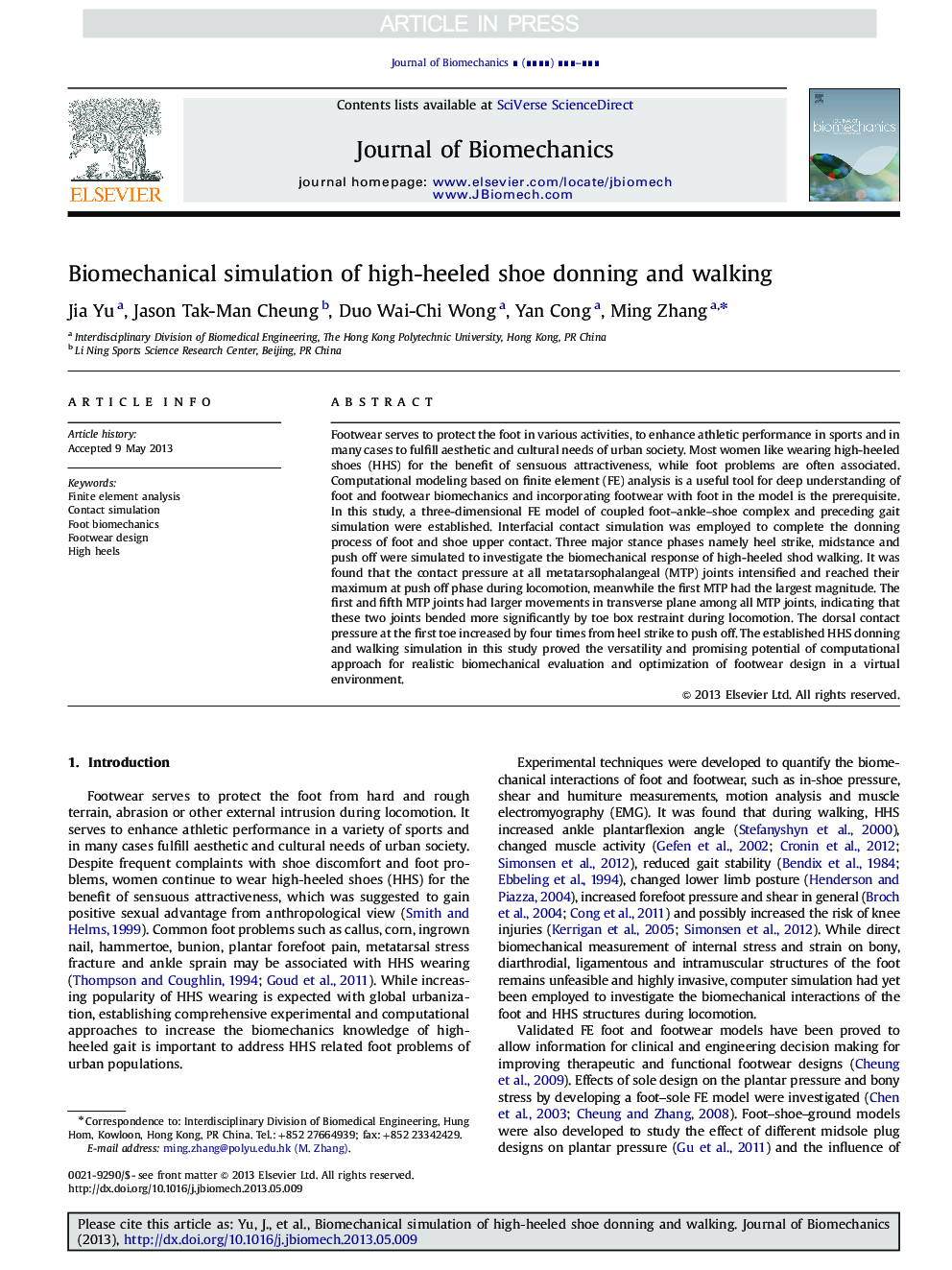| Article ID | Journal | Published Year | Pages | File Type |
|---|---|---|---|---|
| 10432590 | Journal of Biomechanics | 2013 | 8 Pages |
Abstract
Footwear serves to protect the foot in various activities, to enhance athletic performance in sports and in many cases to fulfill aesthetic and cultural needs of urban society. Most women like wearing high-heeled shoes (HHS) for the benefit of sensuous attractiveness, while foot problems are often associated. Computational modeling based on finite element (FE) analysis is a useful tool for deep understanding of foot and footwear biomechanics and incorporating footwear with foot in the model is the prerequisite. In this study, a three-dimensional FE model of coupled foot-ankle-shoe complex and preceding gait simulation were established. Interfacial contact simulation was employed to complete the donning process of foot and shoe upper contact. Three major stance phases namely heel strike, midstance and push off were simulated to investigate the biomechanical response of high-heeled shod walking. It was found that the contact pressure at all metatarsophalangeal (MTP) joints intensified and reached their maximum at push off phase during locomotion, meanwhile the first MTP had the largest magnitude. The first and fifth MTP joints had larger movements in transverse plane among all MTP joints, indicating that these two joints bended more significantly by toe box restraint during locomotion. The dorsal contact pressure at the first toe increased by four times from heel strike to push off. The established HHS donning and walking simulation in this study proved the versatility and promising potential of computational approach for realistic biomechanical evaluation and optimization of footwear design in a virtual environment.
Related Topics
Physical Sciences and Engineering
Engineering
Biomedical Engineering
Authors
Jia Yu, Jason Tak-Man Cheung, Duo Wai-Chi Wong, Yan Cong, Ming Zhang,
